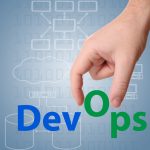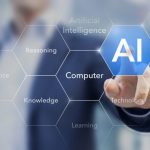DevOps pros want to reduce reliance on single cloud providers

More than half (53 percent) of DevOps professionals in a new study say they will consider multicloud architecture to reduce reliance on a specific cloud provider.
The survey of over 700 development professionals and leaders from Techstrong Research finds that the cloud landscape is changing as buyers increasingly put the developer experience on the same footing as core technical and performance capabilities of cloud infrastructure services.
The challenge of mass observability data -- how much is too much?

Digital transformation has become ubiquitous throughout every industry, as the world grows more reliant on software-driven services. As this trend continues, customers and end users have increasingly heightened expectations that organizations will deliver better-quality, more efficient, and secure digital services, at greater speed. Multicloud environments, which are built on an average of five different platforms, are at the heart of this transformation. They enhance organizations’ agility, so DevOps teams can accelerate innovation.
However, these Multicloud environments have introduced new challenges given their complexity and scale. Applications span multiple technologies and contain millions of lines of code and generate even more dependencies. It is now beyond human capacity for DevOps teams to manually monitor these environments, piece together and analyze logs to gain the insights they need to deliver seamless digital experiences.
Using just-in-time credentials to minimize access-based DevOps security risks

While the rapid adoption of DevOps processes has helped companies assume an agile product position in the market, security has lagged. Specifically, DevOps's prioritization of tools and automation has led to an explosion of machine identities that traditional waterfall-based security mechanisms cannot keep pace with.
Verizon's 2021 Data Breach Investigations report highlighted the extent of the problem by revealing that 61 percent of data breaches involved misused credentials data. These breaches are rarely incidents of a malicious actor stealing a human entity's password. Instead, hackers leverage expired or unused machine identities, also known as workload identities, to penetrate networks. As a result, some 92 percent of respondents to a recent Enterprise Strategy Group (ESG) survey indicated that they see workload identities as "critical" or "very important" risks.
Taking a holistic approach to application security [Q&A]

Application security is becoming mainstream, and that's a good thing as it means that security testing is becoming an embedded aspect of the software development life cycle (SDLC). It also means that automated security testing tools are becoming faster, more sophisticated, and better integrated, so they're less likely to slow down developers or burden them with too many trivial findings or false positives.
But as good and necessary as AppSec testing tools are, it's not nearly enough simply to buy them and run them -- you need to buy the right ones and configure them correctly so that they help build security into your SDLC without bogging it down. It's important to implement a security strategy and a plan. It’s also important to employ developers with the skills to build trust into your software -- a concept known as 'holistic AppSec'.
Security drives DevOps platform adoption

Nearly three-quarters of respondents to a new survey have adopted -- or plan to adopt within a year -- a DevOps platform in order to meet rising industry expectations around security, compliance, toolchain consolidation, and faster software delivery.
The study from GitLab shows security has overtaken even cloud computing as the number one investment area across DevOps teams at global organizations.
New solution makes it easier to manage machine learning models

More than 80 percent of organizations do not have the necessary visibility and control over their machine learning models or how they're deployed throughout the ML model development lifecycle.
To deal with this problem, Iterative has built an open-source model registry solution that allows teams to easily manage models with full context around model lineage, version, production status, data used to train the model, and more.
Process discovery is the secret ingredient to better DevOps

The most overlooked step in any modernization process is process discovery. Corners get cut to conserve time and resources which, often limits the business impact of modernization efforts ultimately resulting in limited productivity improvements.
Process discovery is the key to fine-tuning modernization projects, including testing and deployment, to drive the most value from both the application itself and the work to modernize it. It enables visibility across application workflows -- including exceptions -- allowing organizations to prioritize modernizing the tasks that are most frequent and time-consuming. This extends into DevOps testing.
How improved automation across DevOps can accelerate digital transformation

There’s no doubt the DevOps model is revolutionizing the IT industry by bridging the gap between developers and operations teams. The benefits of automating manual tasks and removing barriers are significant. From shortening development lifecycles to increasing the delivery of high-quality software, DevOps enables companies to innovate faster with lower failure rates.
However, despite the benefits, developers are only spending 39 percent of their time writing new code or improving existing code, according to research by Tidelift and The New Stack. Almost a quarter (22 percent) of their time is spent doing code maintenance and 14 percent on operational tasks and meetings.
How to harness DevOps-driven digital transformation to fuel your organization's success

Around the globe, digital transformation is the new normal. While projects were implemented in isolated pockets before the pandemic, it’s now a business-critical, enterprise-wide drive. The advent of COVID-19 saw most organizations accelerate their transformation roadmap by months or years. This streamlined operations, created new revenue, and enhanced customer experiences during a time of unprecedented disruption.
According to Deloitte, two-fifths (40 percent) of consumers did more online shopping during lockdown, 14 percent participated in more remote medical appointments, and a third streamed more content. The past 12 months have demonstrated that these habits are here to stay. As the world moves into a new state of 'normality', organizations across every industry are focusing on how they can transform even faster to meet customers' redefined expectations and carve out an advantage in a fiercely competitive, increasingly digital world.
Get 'Modern DevOps Practices' ($35.99 value) FREE for a limited time

Containers have entirely changed how developers and end-users see applications as a whole. With Modern DevOps Practices, you'll learn all about containers, their architecture and benefits, and how to implement them within your development lifecycle.
You'll discover how you can transition from the traditional world of virtual machines and adopt modern ways of using DevOps to ship a package of software continuously. Starting with a quick refresher on the core concepts of containers, you'll move on to study the architectural concepts to implement modern ways of application development.
How artificial intelligence and machine learning are changing the development landscape [Q&A]

It's an increasingly rare application these days that doesn’t claim to incorporate some form of artificial intelligence or machine learning capability.
But while this may be great from a marketing standpoint it does pose a challenge for developers. We spoke to Luis Ceze, CEO and co-founder of OctoML, to find out more.
82 percent of CIOs believe their software supply chains are vulnerable

A new global study of 1,000 CIOs finds that 82 percent say their organizations are vulnerable to cyberattacks targeting software supply chains.
The research from machine identity specialist Venafi suggests the shift to cloud native development, along with the increased speed brought about by the adoption of DevOps processes, has made the challenges connected with securing software supply chains infinitely more complex.
The challenge of shifting left: Why AIOps is essential

Development teams are being forced to 'shift left'-- under pressure from the business to move more and more work closer to the design and development phase, earlier in the process.
The idea is to catch bugs earlier, before they turn into costly production outages, and should improve efficiency while minimizing risk within the software development cycle. Yet this demand puts even more pressure and responsibility on developers.
The challenge of guarding against supply chain attacks [Q&A]
Turn data into knowledge to accelerate innovation

Blackberry, Nokia, Blockbuster and Kodak: these are just some of the once-successful companies that failed because they failed to innovate. In our digital world, the difference between sinking and swimming often rests on a business’s ability to provide continuous digital innovations to its customers.
But consumer demands for new technologies and experiences also come with a stipulation: the availability of digital instant gratification must remain uninterrupted. After all, our digital economy doesn’t have normal business hours. It’s always running, and consumers expect to digitally access, interact and purchase at their convenience, at any hour of the day. Digital apps and services must always remain on. And facing an outage or poor system performance, consumers will just switch to another company that provides a better digital experience.
Recent Headlines
Most Commented Stories
BetaNews, your source for breaking tech news, reviews, and in-depth reporting since 1998.
© 1998-2025 BetaNews, Inc. All Rights Reserved. About Us - Privacy Policy - Cookie Policy - Sitemap.
